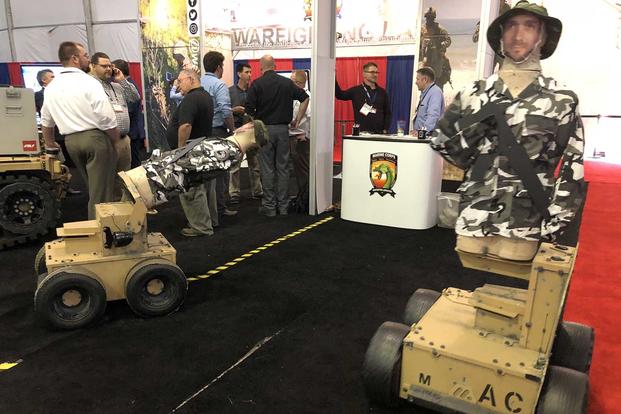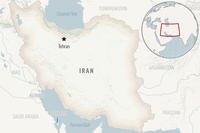QUANTICO, Va. -- Marines at three bases across the country have been participating in a study involving humanoid robot targets that can move at speeds of up to 11 miles per hour, charge the shooter, and run maneuvers with other robots.
A report is due to Marine Corps Commandant Gen. Robert Neller by the end of the year on how these robots, which move on rugged wheeled platforms and will bounce back again and again after being shot, could improve Marines' skills and the overall quality of training.
Mac McKinney, co-lead for the ongoing robotic target study with Range and Training Area Management for Marine Corps Training and Education Command, told Military.com at the Modern Day Marine Expo here that the service owns seven of the targets, and has leased 48 more for the purposes of the test.
"We're looking at robotic targets, on how they're being utilized for basic marksmanship, up to special ops, for training purposes for the Marine Corps," McKinney said. "Is it improving shot-to-hit ratio? How is it improving the skills of the basic warfighter?"
Marines at Quantico, Virginia; Lejeune, North Carolina; and Twentynine Palms, California, have been using the targets to execute training and readiness standards specific to their military occupational specialties, he said.
From the start of the study in November 2017 to its conclusion later this year, thousands of troops will have participated, he added. Their results will be compared against historical averages to determine the robots' effectiveness in training.
At the heart of the study is the notion that shooting something that can move unpredictably -- like a human -- is more effective than squaring off against a static or limited-movement target.
"Right now for the Marine Corps, for movers, we have a rail system and we have the guy with the lollipop [target]," McKinney said. "That's the only thing that's done. But these [robotic targets] will go lateral; these will attack you. We're actually utilizing these in the woods too."
The robots have been employed at various altitudes and weather conditions to test their performance, he said, adding that the Marine Corps hasn't committed to a single manufacturer for the targets, and multiple companies' equipment is being assessed.
After the report reaches the commandant, follow-on investments and training decisions will be under his purview.
"We're looking at what would be the best technology for training purposes to improve on marksmanship," McKinney said. "If you've got a Marine in a fight, you don't want him going from here not having that training. We're looking at what's going to give that Marine the best training to prepare him for that fight that he's getting ready to go into."
-- Hope Hodge Seck can be reached at hope.seck@military.com. Follow her on Twitter at @HopeSeck.










